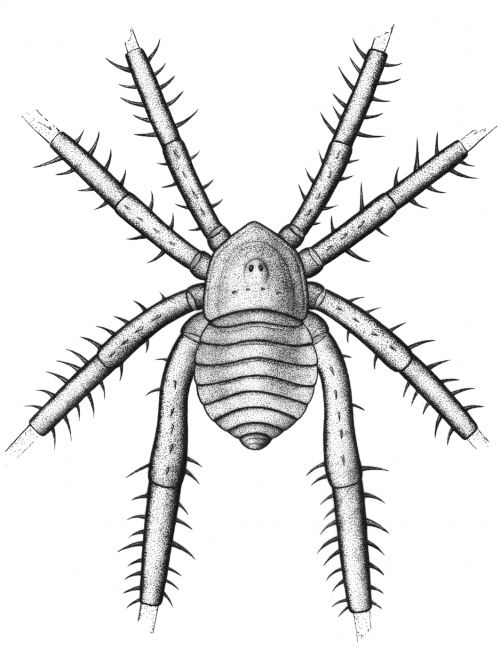This week has been a good one for chelicerate evolution. Here’s another fossil, Douglassarachne acanthopoda, which was creeping around in the forests of Illinois in the late Carboniferous.

Douglassarachne acanthopoda n. gen. n. sp., holotype and only known specimen FMNH PE 91366; for interpretative drawings and scale, see Figure 2. (1) Part, detail of distal femur and more-distal podomeres, showing nature of curved macrospines on lateral edge of distal podomeres, bases of macrospines on dorsal surface of femur; (2) counterpart, detail of posterior opisthosoma showing bilobed structure at base of anal tubercle.
What is it? I don’t know. The authors are unsure. It’s an arachnid, but it could be in the spider lineage or the harvestman lineage, or it could be its own weird thing. It’s spiderish, anyway.



There is a period in the fossil record where there are very few fossils, leaving the evolution of amphibian vertebrates poorly understood. Is this in the carboniferous or the devonian?
That is an impressive fossil but spider is not my first impression without clear feet or fangs.
Spiny tree crabs?
It’s clearly a giant tick.
300-320 Ma (as per the article abstract) is Pennsylvanian, the later half of the Carboniferous. The Devonian is ~360-420 Ma. (Ma is a standard geology abbreviation for million years ago.)
Though I agree with Walter Soloman, it looks kinda tick-ish.